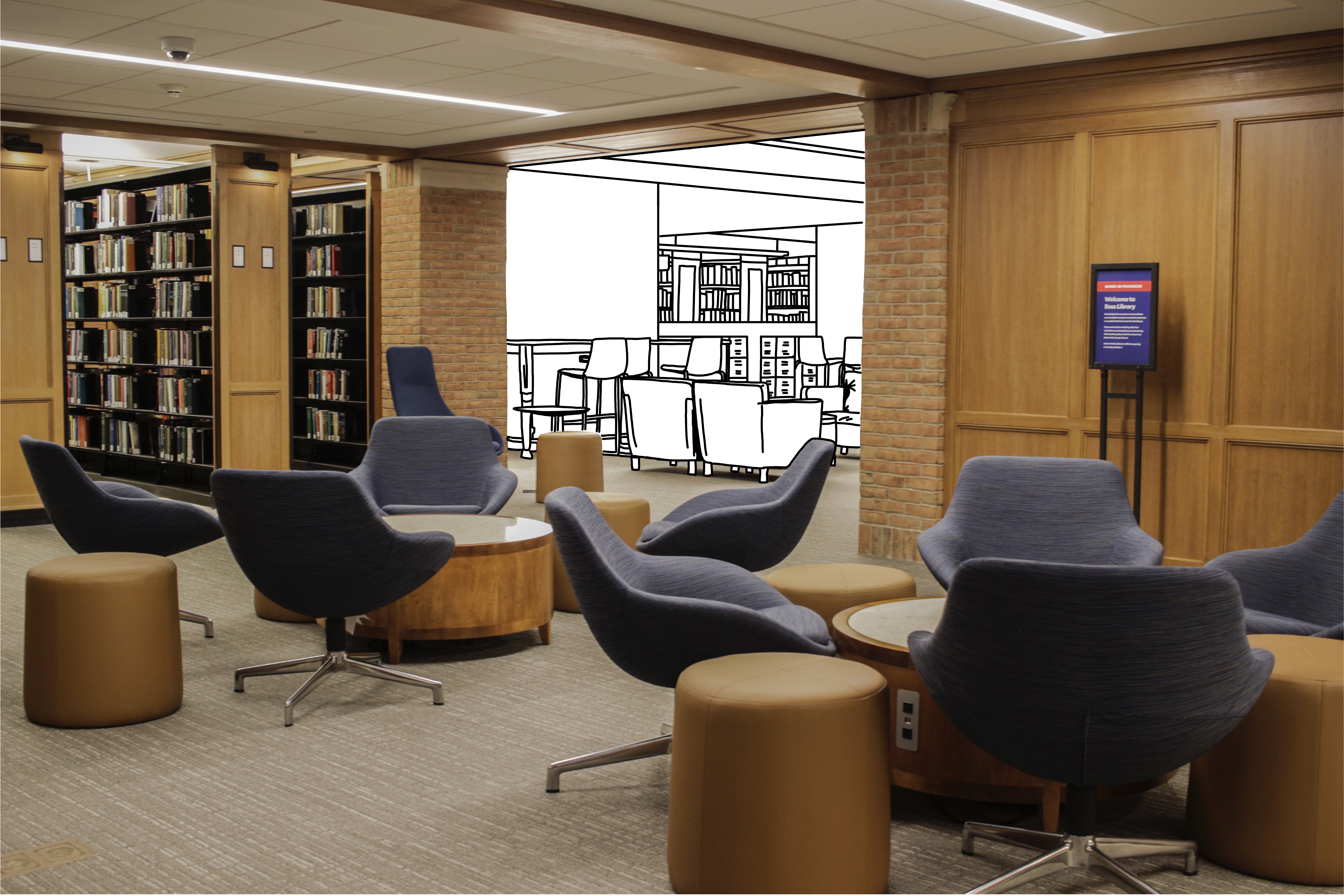
For many, the state of constant construction on campus seems like a staple of the Yale experience. From the closing of Commons to the renovation of Bass Library, the past four years have seen a variety of changes in the physical spaces at Yale.
Bass Library reopened in fall 2019 after closing for renovation over the summer. The layout of the library was redesigned to structure it as a place more conducive to student collaboration. The new Bass includes new furniture, more access to natural light, outdoor courtyards and rearranged shelves.
University Librarian Susan Gibbons explained that the renovations to the library were meant to ease the increased student traffic across the building’s two floors, due to the University’s gradual expansion of the undergraduate student body by 800 students. To increase study space, the library moved 89,000 books to Sterling Memorial Library, reducing its collection by over half. The books that remained have “a renewed focus on critically acclaimed titles and books written or recommended by Yale faculty,” as well as greater representation of fields such as law, sciences and the arts.
Although Bass’s reopening met with mostly positive reactions, there were some that criticized the revamped library. English professor Leslie Brisman said that some changes such as the wooden cubicles and senior project exhibitions were nonsensical and introduced wasted space. Still, Bass remains a popular study hub for students.
Set to open in the coming academic year, the new Schwarzman Center will be the culmination of five years of planning, construction and a $150 million gift from its namesake, Stephen Schwarzman ’69. The building will contain a renovated Commons space, four dining options and a performance space dubbed the “dome room.” According to Jennifer Newman DRA ’11, the center’s associate artistic director, the new space aims to create a “platform where folks can come together for interdisciplinary work” outside of the more disparate communities created by residential colleges.
The Schwarzman Center will be a hub for the arts, hosting student-driven initiatives from comedy shows to dance performances to a cappella nights. The center will also feature galleries to display student art and a rehearsal studio.
According to Newman, accessibility is an important feature of the center’s design and will be facilitated by its digital presence. The center will also host University-wide traditions including alumni programs and holiday dinners. New spaces include the President’s Room, which will host formal dinners and receptions, and the Grotto, a 21-and-over bar.
In addition to large-scale projects and events, the center will also give students a completely new area for everyday social engagement in the form of its food spaces, said Executive Director Garth Ross. Although the details have yet to be finalized, the center will have four locations for students to enjoy meals: Commons, the Bistro, the Grotto and a “grab and go.” The range of food options also extends to the cuisines offered at several stations, including a pizza oven, Asian foods, a rotisserie section and a “greens area.” At different times of the day, the Bistro will serve different foods, such as sushi during midday and bar food in the evening.
These spaces for student social life are projected to reduce the pressure on other overcrowded spots around campus. Student staff member Kenneth Xu ’21 stated that Commons can hold up to 800 people at lunchtime and has standing room for over 2,700.
Alex McGrath ’21, a student employee working on stakeholder engagement, expressed his excitement about the upcoming building in an interview with the News.
“The Schwarzman Center is more than just a building,” McGrath said. “It’s an idea formed by our campus, and when you come to events like this, you get to be part of shaping that idea as something to be durable on campus for decades to come.”
A less permanent change, Silliman’s pop-up “igloos” offered students a temporary outdoor space despite the biting weather this winter. In line with Silliman’s reputation as an innovative center of student wellness, the see-through igloos were furnished with shag rugs, artificial plants, electric candles and cushioned chairs. Head of Silliman College Laurie Santos said she wanted the igloos — which act as greenhouses trapping heat from the sun — to give students a reprieve from the cold weather while still allowing them to enjoy the outdoors.
Santos collaborated with the Silliman Activities and Administration Committee (SAAC) to install the igloos as a surprise at the start of spring semester. She said that the igloos, though temporary, made a lasting impact on online platforms, as groups like Overheard at Yale and the Yale meme page ran with the idea of pop-up “silligloos.”
In the years ahead, new initiatives will continue to transform the face of Yale’s campus. A new kitchen is planned for Branford and Saybrook Colleges, with “flexible exhibition-style cooking platforms” that allow for interaction with chefs and personalized dishes, improved lighting, an upgraded elevator system and new locker rooms. The new kitchen will be more energy efficient and will enhance workplace safety, according to an email to the News from Branford Head of College Enrique De La Cruz.
Yale also has plans for an upcoming physical sciences and engineering building which will be located on Science Hill, north of the Bass Center and west of Kline Chemistry Laboratory. The proposed building, which is tentatively set to open in 2026, is slated to include research laboratories, interaction spaces, seminar and workshop rooms and technical facilities such as clean rooms.
University Provost Scott Strobel presented preliminary plans for the building in March. “We have been looking to create a state-of-the-art space for these initiatives in quantum and instrumentation,” Strobel said.
According to Rob Schoelkopf, applied physics professor and director of the Yale Quantum Institute, the proposed building will help push Yale to the forefront of groundbreaking discoveries in quantum information.
“… [O]ur ability to expand our efforts and our graduate student body has been constrained by the severe space limitations here on main campus,” Schoelkopf wrote in an email to the News. “This new building will allow us to increase our research efforts, to recruit the next generation of faculty in quantum science and engineering, and offer a great educational and research experience to more undergraduate, graduate, and postgraduate students!”
Rebecca Huang | rebecca.huang@yale.edu






